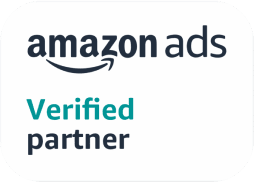
3 Factors to Find the Right Product to Sell on Amazon
How do you know what to sell on Amazon and when to sell it?
Today, there are more than 500 million products for sale on Amazon, with millions more added each year. As Amazon continues dominating the eCommerce industry there’s increased interest in selling on Amazon to create new streams of income or finally scratch that entrepreneur-itch. This post is centered around knowing what to sell on Amazon and when is the right time to sell.
The problem is knowing where to start. When you’re just beginning to find the right products to sell on Amazon you might be asking:
- What should I sell on Amazon?
- Is there even a market for my product?
- How do I know how long the product life cycle will last?
- How do I know what to look for?
- How do I know if a product is too competitive?
There is a lot to consider when finding the right product, so to make it a little easier and a little clearer, we’ve narrowed it down to 3 factors to determine how well a product should sell. Keep in mind, this process is most helpful for someone who is interested or sourcing products directly from a manufacturer and selling them on Amazon, often called, “white labeling” or “private labeling.”
To successfully white label a product you need to find a product niche with high demand and low competition. Hopefully by the end of this post, you’ll better understand how to identify that niche using clear data points.
Before we begin, it’s important to remember this process is not easy, but as with most things in life, with patience and hard work it can be a very lucrative business opportunity. If it were easy, everyone would be doing it.
To find the right product to sell on Amazon here are three factors:
- Product Demand: Are there enough people looking for this product?
- Product Competition: Can I jump into this market/category/keyword and compete?
- Product Profitability: Can I make money selling this product?
PRODUCT DEMAND
First, you’ll need to assess the demand to justify your time and financial investment with specific product. Often finding a product and researching the demand is the longest part of the process.
Using reliable product data points we can determine if the product has enough demand, and that all starts with the Amazon Best Sellers Rank (BSR). The BSR is a product’s ranking within a given category and is adjusted as often as hourly, depending on the category. The BSR is calculated by Amazon using the number of orders for a product compared to products in the same category. The BSR is located under the Product Details on the product listing page and is easiest metric to evaluate the demand.
For example, if a product is ranked #7,405 in the parent category Health & Household. However, if you follow the subcategories you’ll notice the product has a ranking of #83 in the subcategory Health & Household/Vitamins & Dietary Supplements/Weight Loss/ Supplements.
This is an important distinction to make. When you are looking at product rankings make sure you are evaluating the parent category and not just a subcategory. A common mistake sellers make is to assume the subcategory rank is for the parent category.
So, why is understanding how the BSR works important when looking for products to sell?
The Amazon Best Seller Ranking is the best indication of the demand level within a given product category. To give you some idea–generally, a product with a BSR under #60,000 has reasonable demand and sells a decent number of units per day. If the product has a BSR under #10,000, you can assume that the product has significant demand.
Remember, each product category has a different number of products, so ranking in each is relative to the size of the category. For example, the Sports & Outdoors category is a large compared to the Watches category. Therefore, a product with a BSR of #5,000 is selling a lot more units in Sports & Outdoors than in the Watches category.
PRODUCT COMPETITION
Product competition is probably the least understood data point when sellers are looking for new opportunities to sell on Amazon. Sometimes sellers discover a product with high demand and mistakenly assume it’s large enough to jump in with a new product and grab a slice of the pie. Unfortunately, most of the time it’s not that easy.
To understand product competition, you have to figure out if you’re going to have 1 product in 100, or if we are going to be 1 in 100,000. Remember, there are over 500,000,000 products on Amazon so a product in a 1 in 100,000 scenario is highly probable.
Analyze the competition of a product by looking at Amazon as a search engine like Google. This means you need look at products by keyword ranking instead of category. Understanding the difference is VITAL when looking at product competition. he search results will give you an idea of how “relevant” Amazon’s algorithm determines certain products are for the searched keyword.
When viewing the Search Engine Results Page (SERP) we are looking at 3 main points. The first is what products “rank” for the searched keyword. The second is the number of product reviews for each listing, which tell us how difficult the product will be to beat. The third is mow many pages of results show up for the keyword.
We want to see how the product review count is dispersed between the search results. For example, if the top 10 product all have over 4,000 product reviews ti will be a lot harder to penetrate than a SERP where the top 5 products have 200 product reviews.
It’s is important to note that the products with high total product review count are not necessarily an indication that the product is selling more than another.
Amazon’s search results are a clear indication of how “relevant” the Amazon algorithm interprets the data and how competitive the keywords rankings are. Let’s look at an example:
Do a quick search for the keyword “led flashlight.” This SERP shows products with review counts as high as 7,000, which is a lot of reviews by any standards. The results seem to be very similar in look and style and the keyword search has over 400 pages of results. If the average results are around 20 products per page and there are 400 pages, should you choose to “white label” an LED flashlight you are literally 1 in 8,000. Using our criteria to determine the competitiveness, this might be a bit too difficult to break into with a unique offer.
PRODUCT PROFITABILITY
The last, and most crucial point, is product profitability. No matter how competitive a product is or how much demand there is it doesn’t matter if you can’t sell it at a profit. Using the example of the LED flashlight results, the top products on this page range from $9.99 to $19.95. Now let’s assume the landed product cost is as low as $2.00 per unit. Those may sound like great margins, however, after Amazon fulfillment fees, shipping charges and other overhead costs they could be too slim to make anything. When looking at profitability make sure you follow the product through the entire process from manufacturing to the customer’s doorstep to account for all costs. Some costs to consider might be:
- Manufacturing
- Shipping from manufacturer
- Labels for Amazon
- Shipping to Amazon
- Amazon Consultant
- Amazon Fulfillment
- Promos to increase sales velocity
- Unfulfillable/Returned Units
Triple check the potential costs to be totally confident in your investment. The last thing you want is to end up with 5,000 fidget spinners with no hope of even breaking even.
Amazon is competitive, and breaking in is almost never easy, but doing your homework before hand will give a much better shot as success. So, before you empty your retirement account make sure you look at the demand, competitiveness, and profitability.




